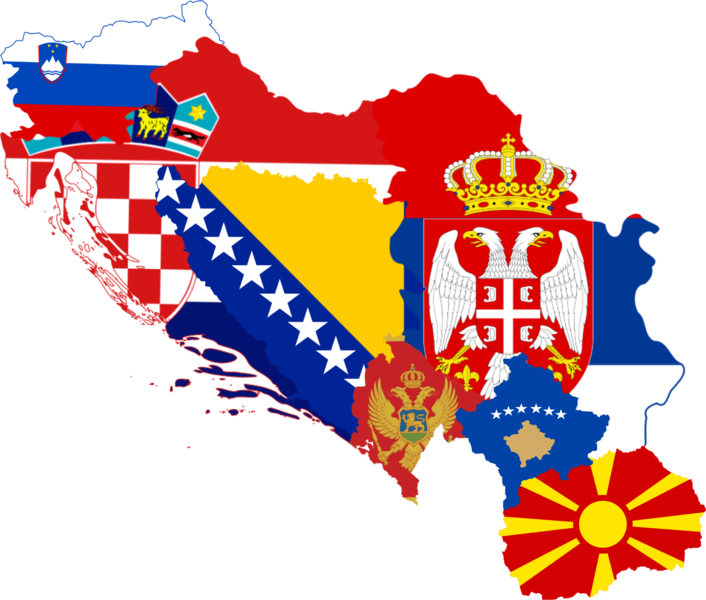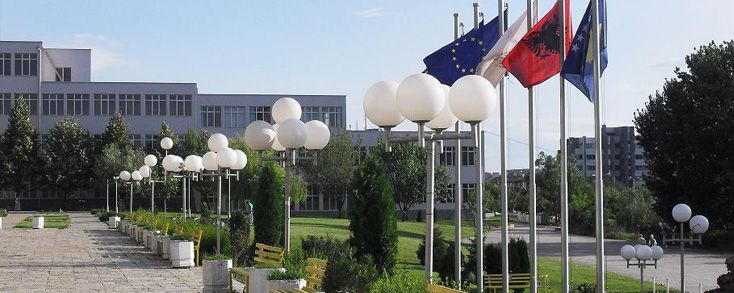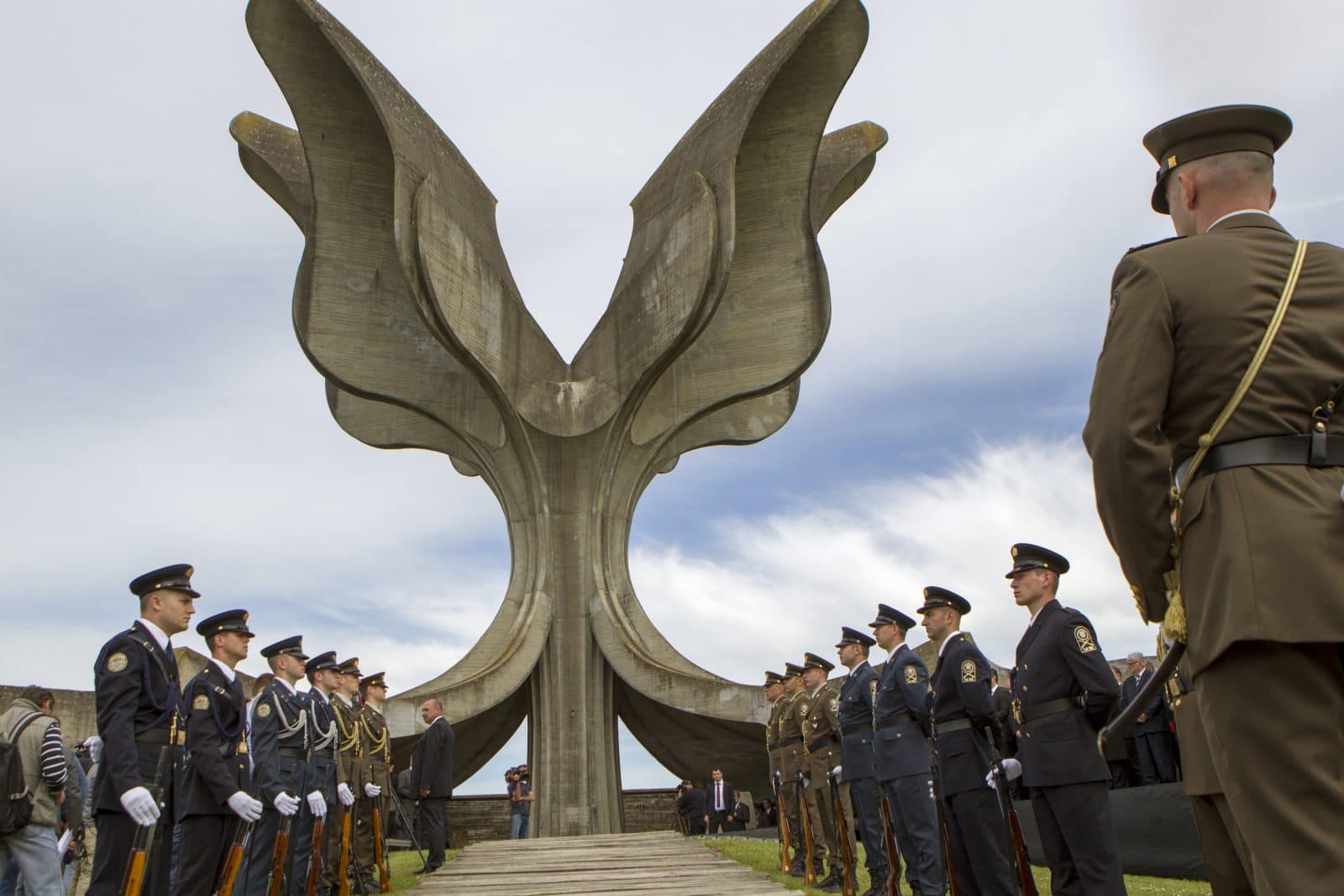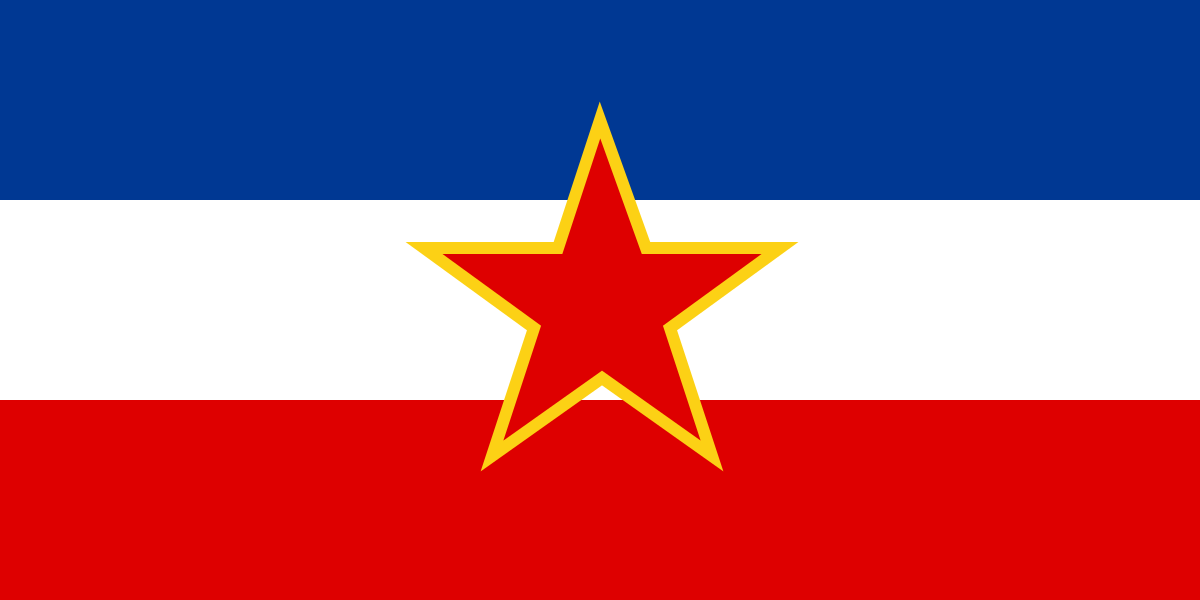
Views: 572
In the last years of the Cold War (1949−1989), the Socialist Federal Republic of Yugoslavia (the SFRY) was the largest, most developed and ethnoculturally diverse country in the Balkan peninsula (South-East Europe).

It was a non-aligned federation comprised of six republics: Bosnia-Herzegovina, Croatia, Macedonia, Montenegro, Serbia, and Slovenia. In addition to these six republics, two separate territories of Kosovo-Metochia and Vojvodina held the status of autonomous provinces within the Republic of Serbia. Undoubtedly, ex-Yugoslavia was a mix of ethnic groups and religions, with Orthodox Christianity, Roman Catholicism, and Islam being three main religions in the country.[i]
Coinciding with the collapse of Communism and resurgent ethnic nationalism[ii] in East Europe during the late 1980s and early 1990s, the SFRY experienced a period of intense political and economic crisis which finally brought the country to the civil war followed by its final destruction.[iii] After Tito’s death in May 1980, a central Government became gradually weakened at the same time when the militant nationalism was growing on in all Yugoslav republics but firstly it started among Muslim Albanians in Kosovo-Metochia in the spring of 1981. There was a proliferation of political parties who, on one hand, advocated the outright independence of the republics and the provinces and, on another, urged greater Western powers to support the secession of the republics from the rest of the federation (Serbia and Montenegro who created in 1992 the Federal Republic of Yugoslavia – the FRY).[iv]
The process of gradual collapsing of Tito’s SFRY which was finally ended in the total destruction of the country followed by bloody civil war, ethnic cleansing and forms of genocide, started a lesser than a year after Tito’s death in south Serbia’s autonomous province of Kosovo-Metochia where Muslim Albanians in March 1981 organized massive political demonstrations against both republican Government of Serbia and a Federal Government of Yugoslavia. At that time, their crucial demand was to transform the provincial status of Kosovo-Metochia into the republican one but there were requirements for the independence and even the unification with neighboring Albania as well.
However, the issue of Yugoslav Albanians in Kosovo-Metochia did not become problematic in the SFRY since 1981 as it was an acute problem since the last months of WWII onward. During the war, the biggest portion of Kosovo-Metochia was incorporated into Mussolini’s established fascist Greater Albania with a capital in Tirana. This “united national state of Albanians” annexed the western territories of the Yugoslav (Vardar) Macedonia too. Nonetheless, when Tito’s Partisans started to penetrate into Kosovo-Metochia in November 1944, the local Albanians staged a mass rebellion against that this province is going to be reintegrated into any kind of post-war Yugoslavia or Serbia regardless of the political system of the country.[v] Finally, the Albanian anti-Yugoslav rebellion was suppressed after six months only by the use of massive military force.[vi] Relevant data on the number of victims does not exist.
The problems with Kosovo-Metochia’s Albanians re-emerged in 1968 with their new political unrest which followed massive political-liberal demonstrations in Belgrade initially organized by the students of Belgrade University. On June 2nd, 1968 during student demonstrations in Belgrade, the police used violence, which resulted in the occupation of university’s buildings by demonstrators. The students demanded better conditions in the university, more opportunity for employment after graduation, the end of police brutality, and the end of social inequality (elimination of the “red bourgeoisie”). This student movement was at that time part of a new trend in the Yugoslav society as a manifestation of national dissatisfaction on social bases. The trend will soon continue with Kosovo-Metochia’s Albanian riots and the Croatian mass movement of the early 1970s as an outcome of the Croatian Spring (1967‒1972).
Growing nationalist aspirations, most notably of the Croatian Spring, which produced a Croatian cultural and linguistic revival, and Kosovo’s Albanian riots in 1968 and early 1970s, were ultimately suppressed by force by Josip Broz Tito and his old comrades. In Croatia, he removed the younger Croat Communist leaders and their supporters from power. The non-threatening national ideologies of the emergent and smaller national groups were allowed to function under the framework of their cultural and national revival. However, Kosovo-Metochia’s Albanian and Bosnia-Herzegovina’s Muslim party’s elites were left untouched by Tito’s widespread purges of younger Communist leaders in other parts of the country (especially in Croatia and Serbia) in the early 1970s.[vii] Nevertheless, the events in Croatia and Kosovo-Metochia led to the promulgation of the 1974 Yugoslav Constitution. It gave the six constituent republics and two autonomous provinces much more political power that they became, in fact, sovereign administrative units within semi-confederation.
The beginning of the end of the Titoist propagandistic idea of the Yugoslav “Brotherhood and Unity”, basically, started in March 1967 in Croatia[viii] to be followed by the events in Kosovo-Metochia in November 1968.
On March 17th, 1967 many Croatian cultural and academic institutions and organizations objected to the alleged marginalization of the Croatian variant of the joint Serbo-Croatian language, as manifested in the first volumes of the common Serbo-Croat Dictionary issued after the Novi Sad Agreement on the Serbo-Croat or Croato-Serb language in 1954.[ix] The Croats complained that the Dictionary relegated much of colloquial Croatian to the status of dialect, while the Serb variant of the same language was presented as a standard form.[x] The issued Croat Declaration on the Name and Status of the Croatian Literary Language,[xi] however, did not much harm to the Croatian cause because the response of the LYC was to condemn the Declaration as not merely nationalist, but as a provocation to the nationalists among the Serbs, who now received a good casus belli for the response what, basically, soon happened.
On November 29th, 1968 (a Day of Yugoslav Republic of Titoslavia) the Albanian riots break out in Priština and other towns in Kosovo-Metochia. The demonstrators demanded that South Serbia’s province receive a status of the republic and, therefore, be allowed the right of secession from Yugoslavia,[xii] and to receive an Albanian-language university separated from Belgrade University. Another significant political demand was that Kosovo-Metochia would be renamed into Kosovo as term Metochia has deep historical, cultural, and national reminiscences on the Serbdom. As a consequence, a party’s purge and mass arrests followed such demands, which, by the way, occurred just as significant reforms were being implemented in the province. Although the republican status was not given to the province for several reasons, a term Metochia was dropped from its official name and Kosovo received an autonomous university (Priština University).[xiii]
The unrest of Kosovo-Metochia’s Albanians continued throughout the 1980s and the 1990s regardless of the fact that according to the last Yugoslav Constitution in 1974, the province of Kosovo-Metochia (now only Kosovo as the Albanians opposed the term Metochia) gained (like Vojvodina as well) the status of extremely large provincial political-national autonomy, basically, equalizing the province with the republics in regard to their political prerogatives. Kosovo had its own Constitution, Academy, University, security forces, Presidency, and Assembly – all political prerogatives of the republic. As a matter of fact, it is very doubtful that the Federal authorities of Yugoslavia which granted to the Albanians a status of a national minority and Kosovo-Metochia (since 1974 only Kosovo) a sub-Federal unit (first region and later province) has ever won wide acceptance among the Albanians in Kosovo-Metochia as they, in fact, tended all the time to live in a Greater Albania but not in Yugoslavia.
The Serbian hemorrhage over the creation and later promotion of two provinces within Serbia were displayed openly only by several dissident intellectuals in the late 1960s and early 1970s but this feeling, however, became a major driving force behind the spread of the Serbian national patriotism since the mid-1980s. It was the case, for instance, with Dobrica Ćosić and Jovan Marjanović who at the 14th Meeting of the Central Committee of the League of Communists of Serbia (May 29th‒30th, 1968) expressed their dismay at the resurgence of the Albanian and the Hungarian nationalism in Kosovo-Metochia and Vojvodina. They were also frustrated at the Bosnian-Herzegovinian claim of separate (Muslim) nationhood in Yugoslavia. As a matter of punishment, both of them were removed from the Central Committee several months later under the accusation of spreading the ideas of Serbian nationalism. Dobrica Ćosić later in the 1980s and 1990s became a leading cultural representative of the Serbian national patriotism and the first President of the Federal Republic of Yugoslavia (Serbia and Montenegro) in 1992.[xiv]
As a direct consequence of the Albanian massive political demonstrations in Kosovo-Metochia in 1968, it was established a new Priština University which very soon became a focal fireplace of spreading the Albanian nationalism and secessionist ideas in the province, especially after 1974 when organized terror over the Serbs started with the consequence of the Serbian migrations from the province to Central and North Serbia.[xv] On November 18th, 1969, a decision was taken to join several educational and research institutions (mainly offshoots of Belgrade University) into the autonomous Priština University, with teaching in two languages: the Albanian and the Serbo-Croat. The university was officially founded on February 15th, 1970.[xvi] The university was the only Albanian-language university in ex-Yugoslavia regardless of the fact that Macedonia’s Albanians required to be established a similar Albanian-language university in Tetovo but it never happened.
The Albanian propaganda claims that up to 1970 it was denied access to the Albanians to higher education what is not true as all Yugoslav Albanians had full access to all Yugoslav universities as all other Yugoslav citizens. What is, however, true is that since 1970 the Yugoslav Albanians had the opportunity to study at the university in their own native language if they wanted. However, the quality of studies at Priština University, especially the practice of taking exams, was so poor that, basically, the university’s diploma was not welcomed outside of Kosovo-Metochia either in Yugoslavia or abroad (where it was not recognized at all) with the exception of Albania.
The anti-Yugoslav activities of Priština University started immediately as soon (in 1971) an agreement was signed with Tirana University in Albania for the accommodation of 200 teachers and professors from Albania over a five-year period, formally in order to assist in the Albanian-language teaching subjects and in the preparation of university textbooks. However, in practice, the textbooks in humanitarian and social sciences, especially concerning the Albanian studies (history, geography, ethnology, ethnography, language, culture) were simply directly imported from Albania what was formally against the Yugoslav law on education. Even the curricula of the study programs were copied from Tirana University.
Since the late 1970s, Priština University, in fact, became a branch of Tirana University. Priština University grew rapidly in the number of Albanian-language students (30,000 in 1981) as the accession process and study quality was simple and even irregular to such extent that this university became the worst in the whole country. On the opposite side, however, Priština University crucially contributed to the enormous progress in growth of the Albanian nationalism and secessionist sentiments. The proportion of Albanian-speaking students was growing from 38 per cent in 1970 to 72 per cent in 1978.
After Tito’s death, the Federal Presidency was shared between the republics and autonomous provinces in the rotation (a year term). While it would be incorrect to say that Yugoslavia immediately collapsed, there were clear signs that the country started to go to this direction since March 1981, when street riots in Kosovo-Metochia erupted and were in next month brutally suppressed by the Yugoslav Federal security forces.[xvii]
Politically, the focal success of Priština University was the 1981 Uprising of ethnic Albanians in the province against the Federal and republican authorities. The uprising was directly inspired and organized by the students of Priština University who were fed by the Albanian nationalism and anti-Yugoslav propaganda for a decade although the situation for the Albanians in the province rapidly improved with the 1974 Yugoslav Constitution according to which, Kosovo-Metochia (officially, the Socialist Autonomous Province of Kosovo)[xviii] was, in fact, independent from Serbia and much more in practice linked with Albania than with Yugoslavia.
After 1974, a Serb-speaking minority in the province suffered substantial discrimination, terror, injustice, and expulsion.[xix] The highest level of possible national-political autonomy produced political repression by the Albanian majority whose aim was to as deeper as clean the province from the Serbs and the Montenegrins for the sake to create ethnically pure (Albanian) Kosovo-Metochia. Although the social and economic conditions of the population became improved, the development gap with other regions and republics of Yugoslavia widened due to the asymmetric economy structure of the country in which Slovenia and Croatia had a privileged position of exploitation of the rest of Yugoslavia. Therefore, a movement of local Albanians for greater autonomy (republic) in provincial affairs increased after the death of Tito.[xx]
It is true that the southern province of Serbia was the poorest region in ex-Yugoslavia although it possessed extremely rich mineral resources which, by the way, were mainly located in North Kosovo-Metochia populated by the Serbs but not the Albanians. It is also true that these mineral deposits and other raw materials were processed and refined elsewhere in Yugoslavia, mainly in Croatia and Slovenia, and, as such, the province and Serbia as republic received few returns on its natural wealth (today, natural wealth in Kosovo-Metochia is in the American hands).
However, the chief reason for the low living standard in the province was the extremely high (highest in Europe) natural birth-rate of ethnic (Muslim) Albanians and their self-wish not to work but rather to live on state’s subsidies. The province was getting regular financial help by the Federal Government in order to improve its economic situation following the fact that all economic and especially industrial infrastructure in Kosovo-Metochia was built up by Serbia and partially by the Federal authorities of Yugoslavia. At the same time, a huge number of Kosovo-Metochia’s Albanians worked in the Western countries as guest workers (Gastarbeiter) and in Slovenia too. Finally, economic situation and living standard of Kosovo-Metochia’s Albanians were notably better and higher in comparison with the Albanian motherland Albania where from Albania’s citizens regularly have been emigrating to the neighboring Yugoslav Kosovo-Metochia and the Yugoslav West Macedonia after WWII (around 300.000 of them arrived just in Kosovo-Metochia) but never vice versa.
On March 11th, 1981, the students of Priština University rose in protest, formally, against their miserable living conditions but very soon the protest was transformed into pure political demonstrations with secessionist features. By April 1st, demonstrators were calling openly for the republican status of Kosovo Province or, in other words, for the creation of the seventh Federal unit within post-Tito’s Yugoslavia. On this day (April 1st) occurred battles between police and demonstrators in the streets of Priština.
To be clear, the republican status was never given to Kosovo’s Albanians in Titoslavia for three fundamental reasons:
- A real fear of the Serbs and Serbia’s Communists of Kosovo’s secession and later its union with Albania.[xxi]
- In this case, the Albanians as a nation would be extra privileged in relations to all other Yugoslav nations for the reason that they would have two national states (Albania and Kosovo).
- Personally, Josip Broz Tito wanted to punish Albania’s Communist authorities for their support of Stalin in his dispute with Tito in 1948.
What the Albanian secessionists rightly understood after Tito’s death is that now came a proper time for the action as the third (just mentioned above), and probably the crucial, reason for the final unification of Kosovo-Metochia with Albania disappeared and when the central Yugoslav Government still was not properly consolidated in the new post-Tito’s political atmosphere. The Yugoslav Communist leadership refused to negotiate with the demonstrators, using a combination of force and the promise of economic progress to put an end to the unrest. As a matter of answer to the Albanian nationalism and secession, not Serbia’s but the Yugoslav Government imposed a curfew and a state of emergency in the province with the intervention of combined security forces (police and army) from all Yugoslav republics. According to some sources, approximately 1/3 of the Yugoslav People’s Army was deployed in Kosovo-Metochia and tanks appeared on the streets of Priština for the first time since WWII. Finally, the secessionist uprising was brutally suppressed with thirteen Albanians died, 1,400 sentenced to up to fifteen years of prison, 3,000 given minor sentences of up to three months, and some 6,000 received other forms of punishment.
For any case, Kosovo-Metochia’s uprising of the Albanians in March‒April 1981 marked the actual beginning of the gradual disintegration and collapse of the SFRY. As a direct consequence of re-born Albanian national-chauvinism in 1981, during the 1980s the terror over Kosovo-Metochia’s Serbs and Montenegrins became intensified followed by both individual and group-organized emigration from the province of the Serb-speaking population. The Yugoslav and Serbia’s Governments were simply hard-of-hearing about such development of the political situation in South Serbia and, therefore, whoever Serb politician was ready to offer real protection to the Serbs and Montenegrins in Kosovo-Metochia was in advanced extremely welcomed by all Serbs within Yugoslavia. This person appeared to be Slobodan Milošević in 1987.
Ex-University Professor
sotirovic1967@gmail.com
© Vladislav B. Sotirović 2019
Endnotes:
[i] About Yugoslavia’s ethnonational and confessional structure from 1918 to 1991, see in [Tim Judah, The Serbs: History, Myth & the Destruction of Yugoslavia, New Haven−London: Yale University Press, 1997, 311−317].
[ii] On ethnic nationalism, see in [Daniele Conversi (ed.), Ethnonationalism in the Contemporary World: Walker Connor and the Study of Nationalism, London−New York: Routledge Taylor & Francis Group, 2004].
[iii] About the civil war in Yugoslavia in the 1990s, see in [Jelena Guskova, Istorija jugoslovenske krize 1990−2000, I−II, Beograd: IGAM, 2003].
[iv] On explaining Yugoslavia from the Western perspective, see in [John B. Allcock, Explaining Yugoslavia, New York: Columbia University Press, 2000].
[v] It is totally wrong approach by many researchers on Yugoslavia that the 1944 Albanian rebellion in Kosovo-Metochia was essentially against the installment of the new Communist regime, like in [Aleksandar Pavković, “National Liberations in Former Yugoslavia: When Will They End?”, East European Quarterly, XXXVI, № 2, 2002, 235].
[vi] A Titoist regime during the second half of the 1940s also faced armed resistance and opposition from small guerilla groups of the Serbian royal Chetniks in the mountains of Bosnia-Herzegovina and Serbia. However, this only remaining source of political-national resistance was finally eliminated by force by 1949.
[vii] Aleksandar Pavković, “National Liberations in Former Yugoslavia: When Will They End?”, East European Quarterly, XXXVI, № 2, 2002, 238.
[viii] About sociolinguistic aspect of the dissolution of ex-Yugoslavia, see in [Владислав Б. Сотировић, Социолингуистички аспект распада Југославије и српско национално питање, Нови Сад−Србиње: Добрица књига, 2007].
[ix] The former Serbo-Croat or Croato-Serb language belonged to the South Slavonic linguistic group. It was used in ex-Yugoslavia within its pre-1991 frontiers as an official language in all republics except in Slovenia and Macedonia. It was written either by the Latin or the Cyrillic script [Christopher Moseley, R. E. Asher (eds.), Atlas of the World’s Languages, London‒New York: 1994, 226]. About ex-Serbo-Croat, today separate Serbian, Bosnian, Montenegrin, and Croatian languages, see in [Glanville Price (ed.), Encyclopedia of the Languages of Europe, Oxford, UK‒Malden, Massachusetts: Blackwell Publishers Inc., 2000, 422‒430].
[x] Dragutin Pavličević, Povijest Hrvatske, Drugo, izmijenjeno i prošireno izdanje sa 16 povijesnih karata u boji, Zagreb: Naklada P.I.P. Pavičić, 2000, 483.
[xi] The text of the Declaration was “conceived by members of Matica hrvatska, and signed by leading members of a number of Croatian cultural and scientific institutions” [Milan Moguš, A History of the Croatian Language: Toward a Common Standard, Zagreb: Nakladni zavod Globus, 1995, 220].
[xii] The Communist Party of Yugoslavia recognized officially in 1924 the right of secession from Yugoslavia and inclusion into neighboring (national) states to the next ethnic minorities: Albanian, Bulgarian, and Hungarian [Радован Самарџић и други, Косово и Метохија у српској историји, Београд: СКЗ, 1989, 376].
[xiii] Gregory C. Ference (ed.), Chronology of 20th-century East European History, Detroit‒Washington, D. C.‒London: Gale Research Inc., 417. Compare with an Albanian approach, for instance in [Peter R. Prifti, “Minority Politics: The Albanians in Yugoslavia”, Balkanistica, 2, 1975, 7‒30; Arshi Pipa, Repishti Sami, Studies on Kosova, New York, 1984; Albert M. Tosches, “The Albanian Lands: Continuity and Change in a Buffer Region”, John Chay, Thomas E. Ross (eds.), Buffer States in World Politics, Boulder, Colorado, 1986].
[xiv] Gregory C. Ference (ed.), Chronology of 20th-century East European History, Detroit‒Washington, D. C.‒London: Gale Research Inc., 416.
[xv] On the draft chronicle of Kosovo’s Albanian crimes over the Serbs from 1941 to 1989, see in [Радован Самарџић и други, Косово и Метохија у српској историји, Београд: СКЗ, 1989, 405−436].
[xvi] Robert Elsie, Historical Dictionary of Kosova, Lanham, Maryland‒Toronto‒Oxford: The Scarecrow Press, Inc., 2004, 184.
[xvii] Jan Palmowski, A Dictionary of Twentieth-Century World History, Reprinted with corrections, Oxford−New York: Oxford University Press, 1998, 675.
[xviii] Richard Frucht (ed.), Encyclopedia of Eastern Europe from the Congress of Vienna to the Fall of Communism, New York‒London: Garland Publishing, Inc., 2000, 428.
[xix] Only from 1981 to 1987 there were 22,307 emigrants from Kosovo-Metochia of the Serb and Montenegrin origin [Јеврем Дамњановић, Косовска голгота, Политика Intervju, Специјално издање, 1988-10-22, Београд, 38].
[xx] Richard Frucht (ed.), Encyclopedia of Eastern Europe from the Congress of Vienna to the Fall of Communism, New York‒London: Garland Publishing, Inc., 2000, 428.
[xxi] On the concept of a Greater Albania, see in [Душан Т. Батаковић, Косово и Метохија: Историја и идеологија, Београд: Чигоја штампа, 2007, 183−202].
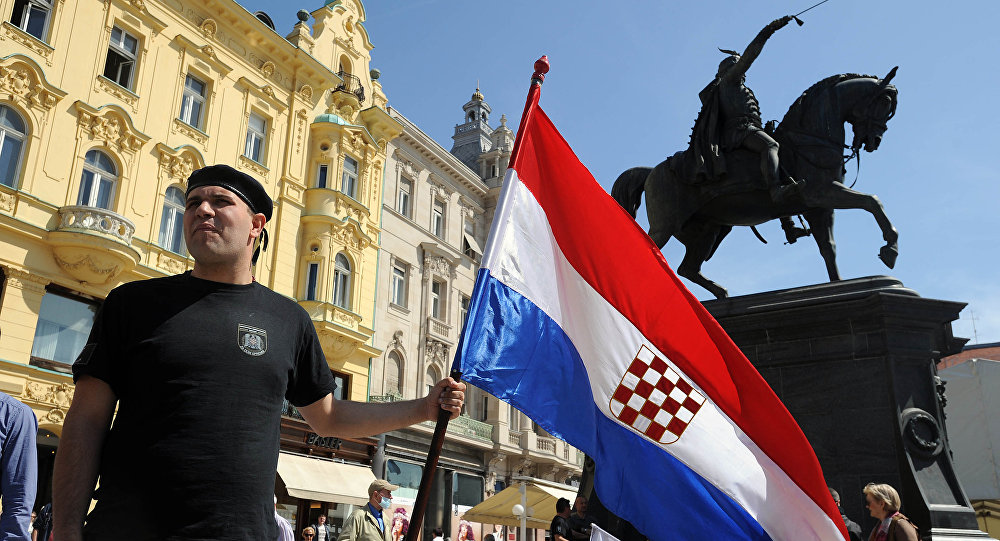
Origins of images: Facebook, Twitter, Wikimedia, Wikipedia, Flickr, Google, Imageinjection & Pinterest.
Read our Disclaimer/Legal Statement!
Donate to Support Us
We would like to ask you to consider a small donation to help our team keep working. We accept no advertising and rely only on you, our readers, to keep us digging the truth on history, global politics and international relations.
